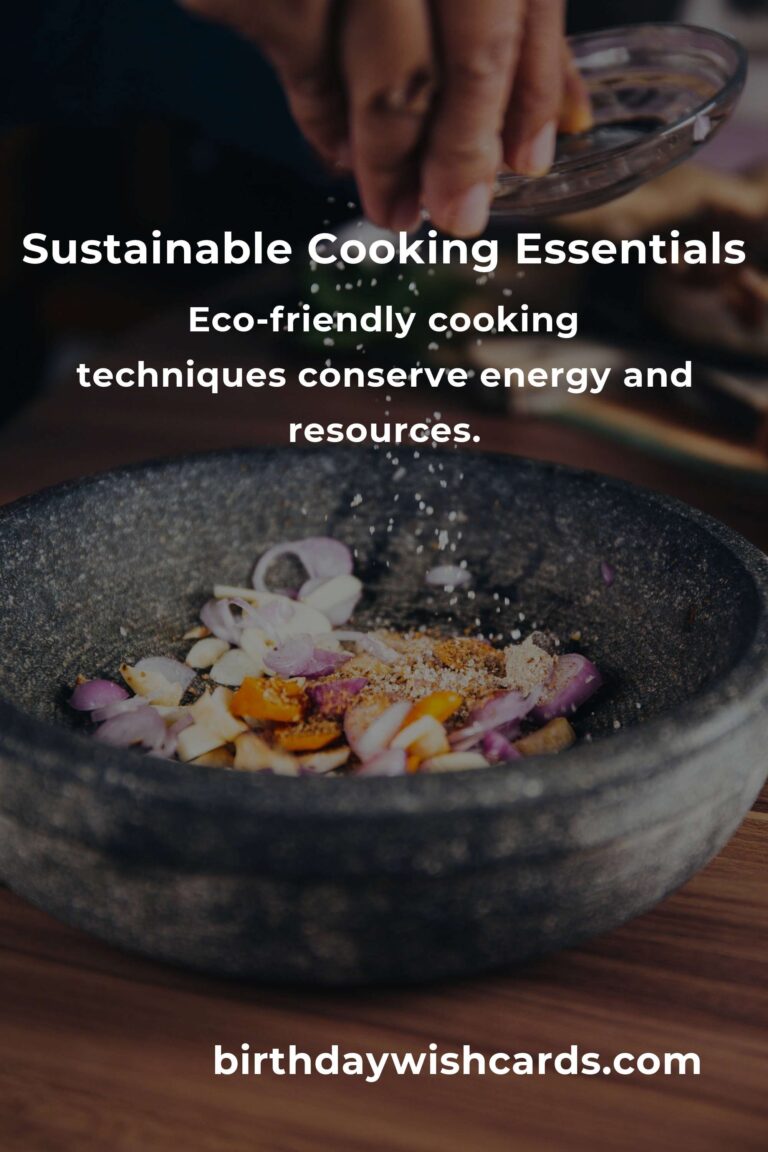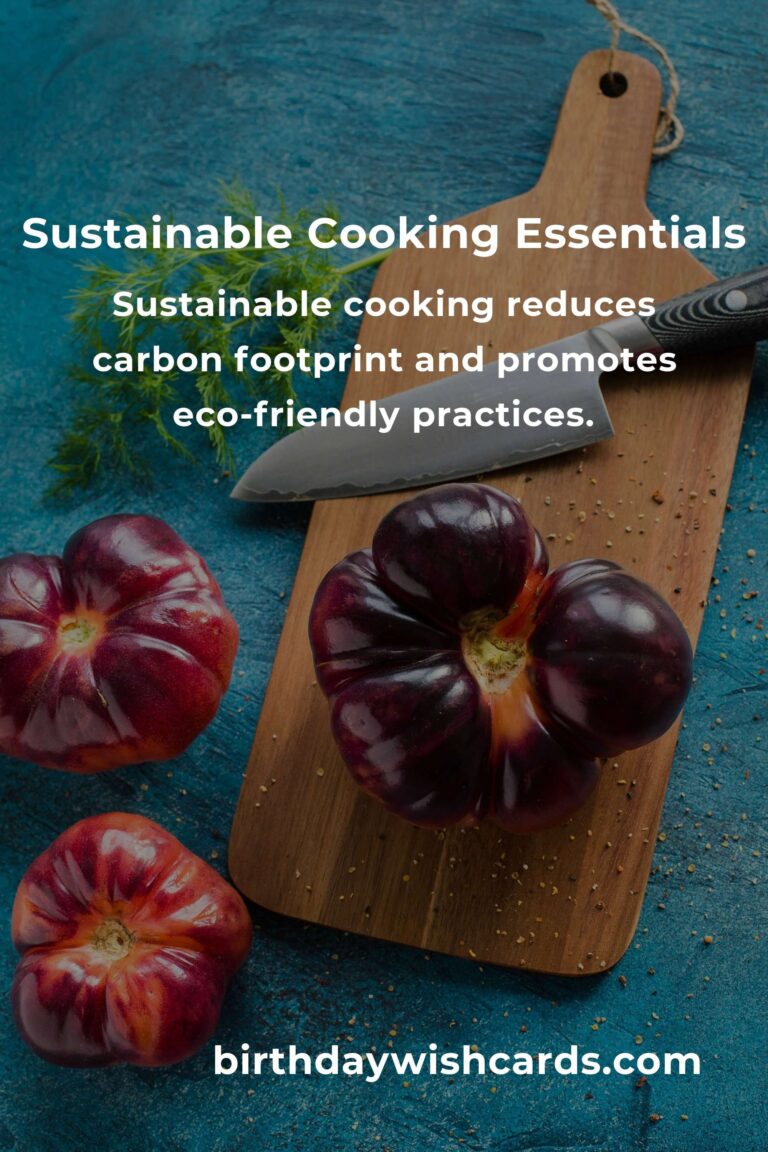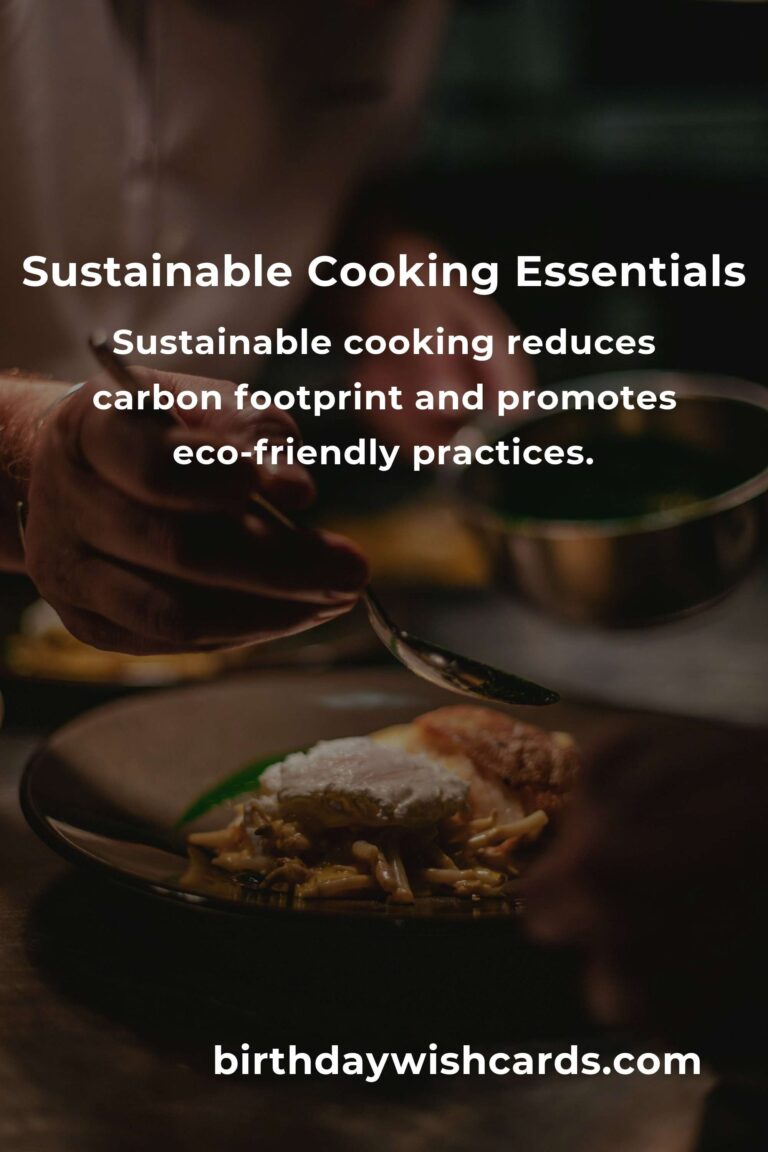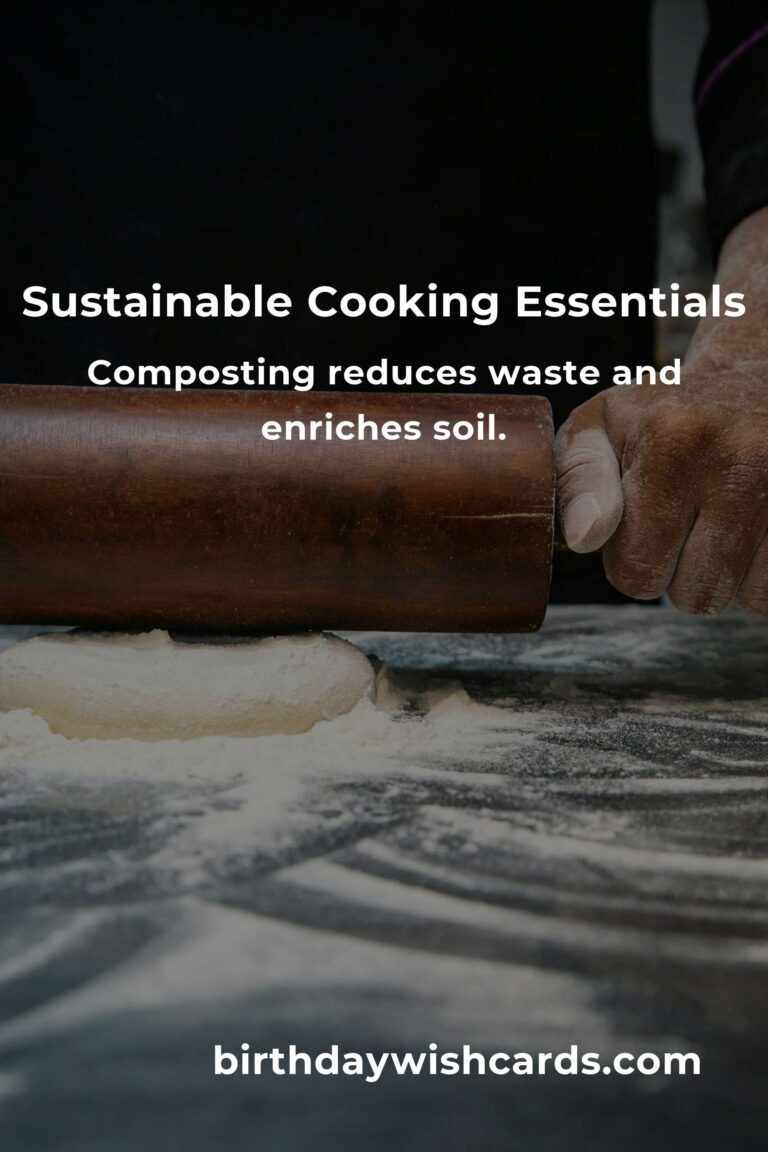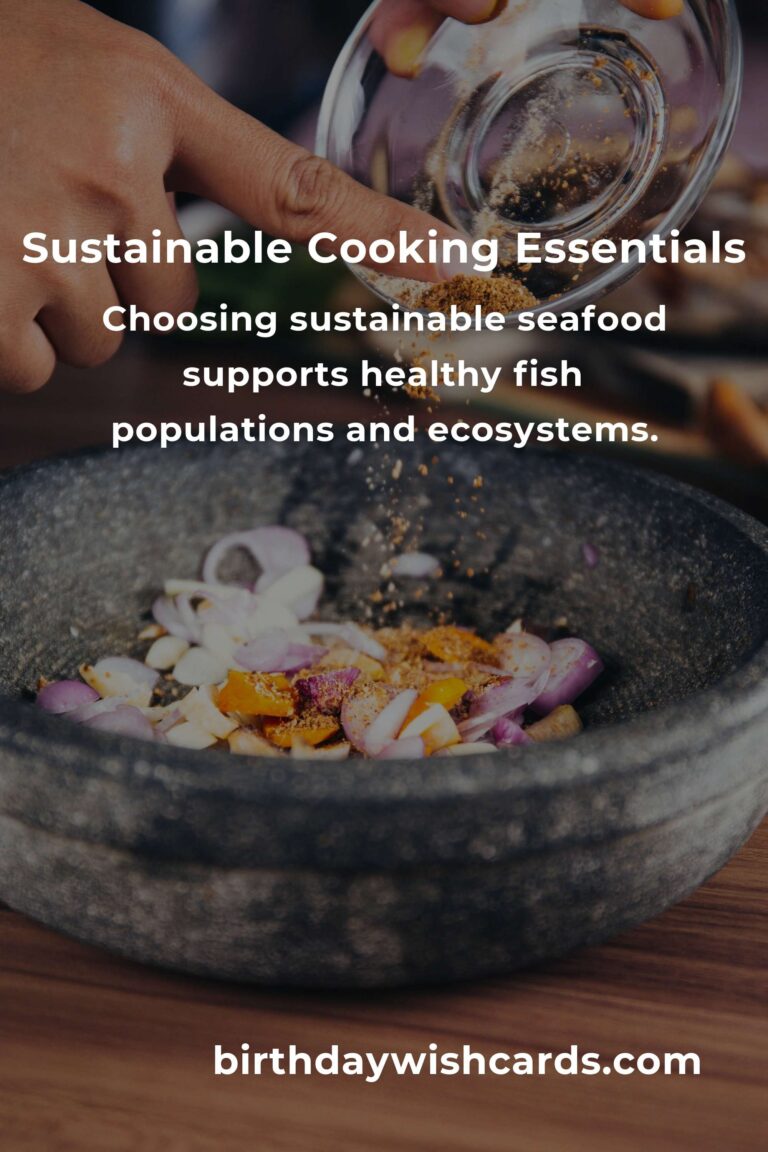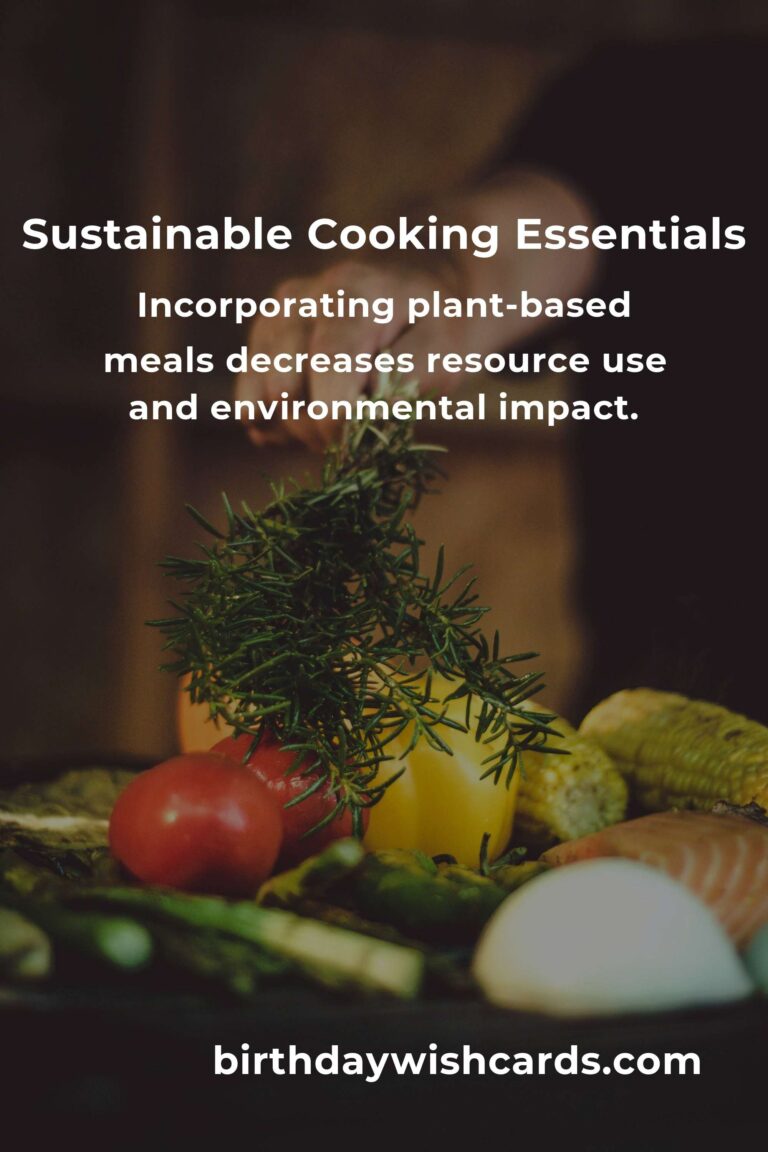
In recent years, sustainable cooking has become a significant trend as more people are looking to reduce their carbon footprint and make eco-friendly choices in their kitchens. Embracing sustainable cooking practices not only benefits the environment but can also lead to healthier eating habits and cost savings. This comprehensive checklist will guide you through the essential steps to start cooking sustainably.
1. Prioritize Local and Seasonal Ingredients
Using local and seasonal ingredients is one of the easiest ways to make your cooking more sustainable. Local produce typically requires less transportation, reducing carbon emissions. Seasonal foods are often fresher and more nutritious than out-of-season options. Visit farmer’s markets or join a community-supported agriculture (CSA) program to access fresh, local produce.
2. Reduce Food Waste
Food waste is a significant issue, with a large percentage of food produced globally going uneaten. To minimize waste, plan your meals, make shopping lists, and store ingredients properly. Utilize leftovers creatively by incorporating them into new dishes or freezing them for later use.
3. Choose Sustainable Seafood
Sustainable seafood choices help maintain healthy fish populations and ecosystems. Opt for seafood that is certified by organizations like the Marine Stewardship Council (MSC) or Aquaculture Stewardship Council (ASC). Educate yourself about which species are overfished and make informed purchasing decisions.
4. Use Energy-Efficient Appliances
Investing in energy-efficient appliances can significantly reduce the environmental impact of your cooking. Look for ENERGY STAR-rated appliances, which consume less energy and water. Additionally, use appliances like pressure cookers or microwaves that require less energy than conventional ovens.
5. Embrace Plant-Based Meals
Reducing meat consumption and incorporating more plant-based meals into your diet is a sustainable practice. Plant-based foods generally require fewer resources to produce and have a lower environmental impact. Explore different cuisines and recipes that highlight vegetables, grains, and legumes.
6. Practice Eco-Friendly Cooking Techniques
Eco-friendly cooking techniques can further enhance your sustainable cooking efforts. These include using lids on pots to conserve heat, simmering instead of boiling, and cooking in bulk to save energy. Another tip is to turn off the oven or stove a few minutes before your food is fully cooked, allowing residual heat to finish the process.
7. Compost Kitchen Scraps
Composting kitchen scraps like vegetable peels, coffee grounds, and eggshells is an effective way to reduce waste and enrich the soil. If you have a backyard, consider starting a compost pile or investing in a compost bin. Many urban areas also offer community composting programs.
8. Opt for Reusable and Recyclable Materials
Reduce reliance on single-use plastics by opting for reusable containers, bags, and wraps. Use glass jars, stainless steel containers, and beeswax wraps instead of plastic options. Additionally, recycle whenever possible and properly sort materials according to your local recycling guidelines.
9. Educate Yourself and Others
Stay informed about sustainable cooking practices and share your knowledge with others. Join workshops, read books, and follow online resources to continue learning. By inspiring others to embrace sustainability in their kitchens, you contribute to a larger movement towards a healthier planet.
By following this checklist, you can transform your kitchen into a hub of sustainability. Each small step contributes to a larger positive impact on the environment, promoting a healthier and more sustainable future.
Sustainable cooking reduces carbon footprint and promotes eco-friendly practices. Using local and seasonal ingredients minimizes transportation emissions. Reducing food waste involves planning meals and utilizing leftovers creatively. Choosing sustainable seafood supports healthy fish populations and ecosystems. Investing in energy-efficient appliances reduces environmental impact. Incorporating plant-based meals decreases resource use and environmental impact. Eco-friendly cooking techniques conserve energy and resources. Composting reduces waste and enriches soil. Reusable materials reduce reliance on single-use plastics. Educating yourself and others can spread sustainable cooking practices.
#SustainableCooking #EcoFriendly #GreenLiving #FoodWaste #PlantBased



